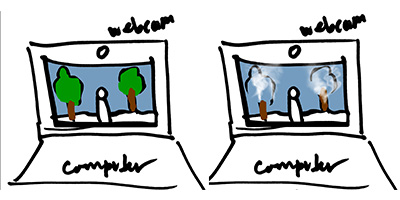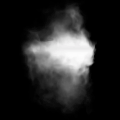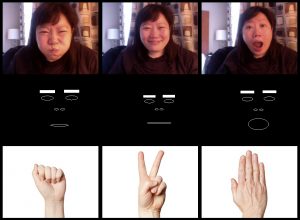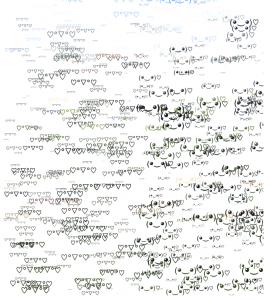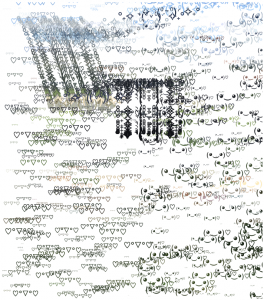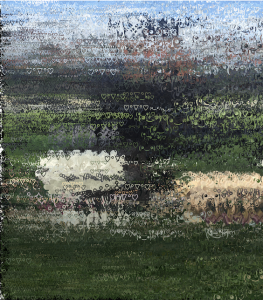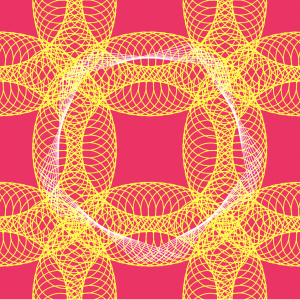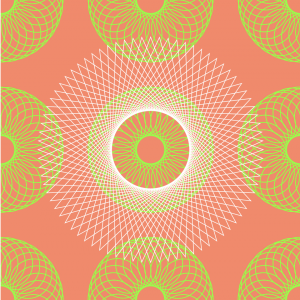/* SooA Kim
sookim@andrew.cmu.edu
Final Project
Section C
*/
//webcam and image texture variables
var myCaptureDevice;
var img = [];
var frames = [];
var framelist = 0;
var link1= [];
var link2 = [];
var link3 = [];
//particle variables
var gravity = 0.1; // downward acceleration
var springy = 0.9; // how much velocity is retained after bounce
var drag = 0.0001; // drag causes particles to slow down
var np = 50;
var particles = [];
var Image1 = [];
var Image2 = [];
var Image3 = [];
var link1 = [
"https://i.imgur.com/qAayMED.png",
"https://i.imgur.com/86biLWe.png",
"https://i.imgur.com/r5UE5kg.png",
"https://i.imgur.com/I1BBRfH.png",
"https://i.imgur.com/D1l3aXi.png",
"https://i.imgur.com/NAHr7yB.png",
"https://i.imgur.com/F0SB9GM.png",
"https://i.imgur.com/B1kvNaM.png",
"https://i.imgur.com/Th9sahL.png",
"https://i.imgur.com/c9cuj2k.png"
]
var link2 = [
"https://i.imgur.com/z7BAFyp.png",
"https://i.imgur.com/8Ww7Vuo.png",
"https://i.imgur.com/QFjlLr2.png",
"https://i.imgur.com/0sdtErd.png",
]
var link3 = [
"https://i.imgur.com/ZD7IoUP.png"
]
var textures = [link1, link2, link3];
var textureIndex = 0;
function preload() {
for (var z = 0; z < link1.length; z++){
link1[z] = loadImage(link1[z]);
}
for (var z = 0; z < link2.length; z++){
link2[z] = loadImage(link2[z]);
}
for (var z = 0; z < link3.length; z++){
link3[z] = loadImage(link3[z]);
}
}
function setup() {
createCanvas(600, 480);
myCaptureDevice = createCapture(VIDEO);
myCaptureDevice.size(600, 480); // attempt to size the camera.
myCaptureDevice.hide(); // this hides an extra view.
}
function mousePressed(){
textureNew = floor(random(textures.length)); //to prevent from same number(texture) that's selected again,
while(textureNew == textureIndex){
textureNew = floor(random(textures.length));
}
textureIndex = textureNew;
}
function particleStep() {
this.age++;
this.x += this.dx;
this.y += this.dy;
this.dy = this.dy + gravity; // force of gravity
var vs = Math.pow(this.dx, 2) + Math.pow(this.dy, 2);
// d is the ratio of old velocty to new velocity
var d = vs * drag;
d = min(d, 1);
// scale dx and dy to include drag effect
this.dx *= (1 - d);
this.dy *= (1 - d);
}
function makeParticle(px, py, pdx, pdy, imglink) {
p = {x: px, y: py,
dx: pdx, dy: pdy,
age: 0,
step: particleStep,
draw: particleDraw,
image: imglink //making image as a parameter
}
return p;
}
function particleDraw() {
//tint(255, map(this.age, 0, 30, 200, 0)); //fade out image particles at the end
image(this.image, this.x, this.y);
}
function isColor(c) {
return (c instanceof Array);
}
function draw() {
tint(255, 255);
background(220);
imageMode(CORNER);
myCaptureDevice.loadPixels(); // this must be done on each frame.
image(myCaptureDevice, 0, 0);
framelist += 1;
imageMode(CENTER);
// get the color value of every 20 pixels of webcam output
for (var i = 0; i < width; i += 20) {
for (var j = 0; j < height; j+= 20) {
var currentColor = myCaptureDevice.get(i, j);
var rd = red(currentColor);
var gr = green(currentColor);
var bl = blue(currentColor);
// targetColor: green
if (rd < 90 & gr > 100 && bl < 80){
for (var s = 0; s < textures[textureIndex].length; s++) {
var pImage = makeParticle(i, j, random(-10, 10), random (-10, 10),textures[textureIndex][s]); //replaced position with i and j that tracks green pixels
if (particles.length < 10000) {
particles.push(pImage);
}
}
}
}
}
newParticles = [];
for (var i = 0; i < particles.length; i++) { // for each particle
var p = particles[i];
p.step();
p.draw();
if (p.age < 20) { //to last good amount of particle (due to laggy actions)
newParticles.push(p);
}
}
particles = newParticles;
}
// moving frames
function framePush(){
framelist += 1;
image(frames[framelist % frames.length], 0, 0);
}
Mouse click the screen!
For this final project, I created a variety of sprite textures to apply into a particle effect animation that replaces the green pixels in the webcam screen. The sprite texture changes when the mouse is clicked. I approached this project with the basis of environmental concern. I wanted to convey a message on what happens with climate change with the imagery of air pollution covered by these sprite texture that imitates dusts and smokes.
I tried to be be playful in terms of this project as well by providing different textures. I started this code by tracking the green pixels first, then I moved onto figuring out how to replace the image texture to the particle effect.
The coding process was very challenging, but I am really happy with the outcome.
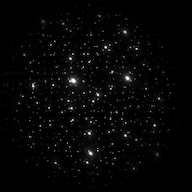
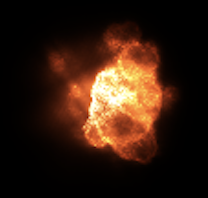
sprite textures
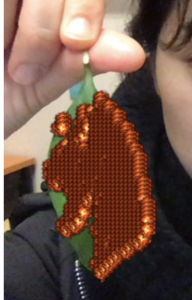
first try on getting the sprite texture to the image
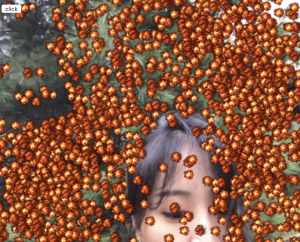
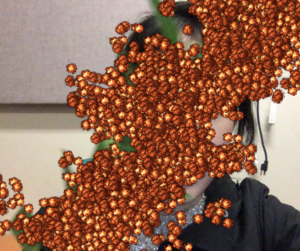
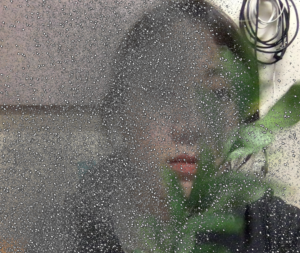
![[OLD FALL 2019] 15-104 • Introduction to Computing for Creative Practice](../../wp-content/uploads/2020/08/stop-banner.png)
